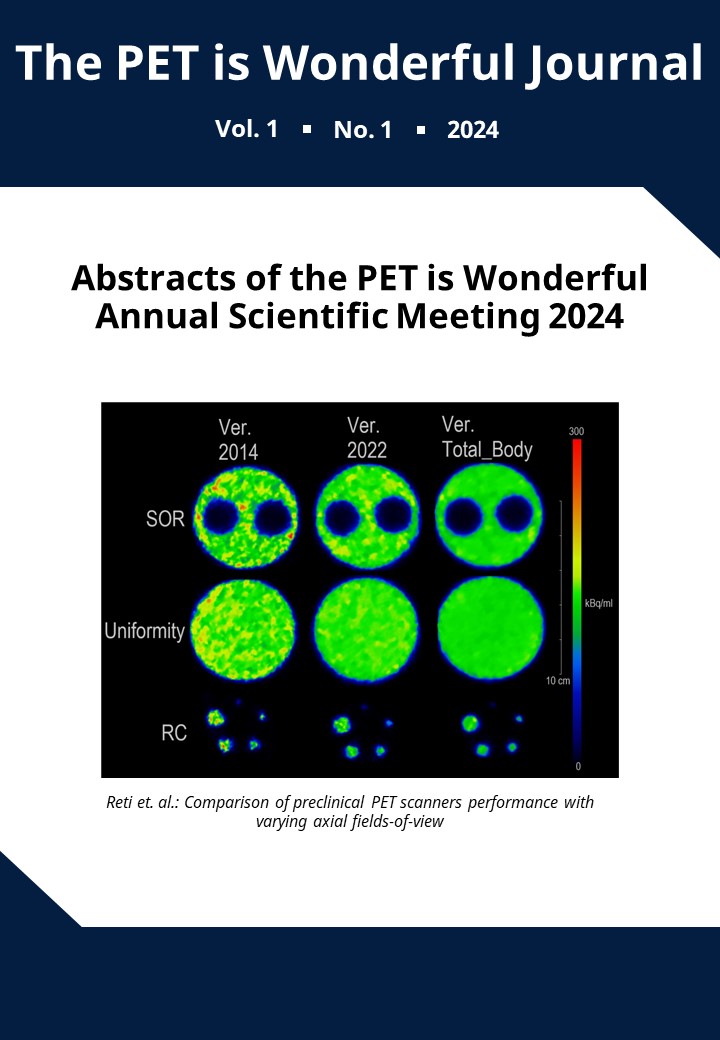A Systems-Level Analysis of 2-[18F]FDG PET in Pigs Reveals Complex Skeletal Metabolism Networks in vivo which are altered with Osteomyelitis
DOI:
https://doi.org/10.2218/piwjournal.9835Abstract
Our understanding of complex tissue interactions at a systems level remains rudimentary, limiting our ability to dissect mechanisms underlying diseases and develop novel therapeutics. Skeletal research has focused on the pathogenicity of obesity and diabetes mellitus on the skeleton; however, it has been recently revealed that the skeleton is not merely an endocrine target but also a secretory organ, modulating systemic energy homeostasis1,2. We recently discovered that different bones within the murine skeleton have a unique glucose metabolism and form a complex metabolic network3. Thus, we hypothesised that different bones within the porcine skeleton would have unique molecular signatures and form a distinct metabolic network, and these networks would be altered by osteomyelitis, an inflammatory condition of the bone.
Five healthy mini and three Danish Landrace-Yorkshire pigs (inoculated with S. aureus to induce osteomyelitis) underwent static 2-[18F]FDG PET/CT and were analysed to measure bone and bone marrow adipose tissue (BMAT) glucose metabolism. Analyze was used for image analysis and processing. Bone and bone marrow volumes of interest were segmented in CT images using Hounsfield Unit (HU) > 300 (bone) and HU -200 to 115 (BMAT; Fig1). PET images were used to extract average standard uptake values. Network analysis was performed using Graphia.
Osteomyelitis pigs had a lower bone density and increased BMAT volume compared to healthy controls. There was an increased incorporation of 2-[18F]FDG into the bone and BMAT of osteomyelitis pigs. Similar to what has previously been observed in the mouse3 and human4, there was an increased incorporation of 2-[18F]FDG in the axial skeleton compared to the appendicular skeleton. Network analysis indicated a shift in bone metabolic profiles between healthy and osteomyelitis pigs.
Please click on the 'PDF' for the full abstract!
Downloads
Published
Issue
Section
License
Copyright (c) 2024 Karla Suchacki, Chloe Brown, Adriana Tavares, Ruth Morgan, Aage Kristian Olsen Alstrup, Svend Borup Jensen, Lars Jødal, Pia Afzeliuss

This work is licensed under a Creative Commons Attribution 4.0 International License.





